Barcelona’s rising temperatures and the thermoregulatory effect of the sea causes the coastal neighborhoods, such as Poblenou, to have the highest temperatures recorded during the night. It is crucial for the indoor environment to remain cooler at night in order for the body to recover from the heat throughout the day, especially during the summer months. In order to achieve energy efficiency, cognitive focus and bodily comfort, the inflatables will become responsive to indoor and outdoor environments.


Should architecture define experience, or should experience shape architecture? What does it truly mean to exist and occupy a space? What is comfort? Humans spend 90% of their time indoors, exposing themselves to many mental and physical discomforts.
Barcelona’s climate is hot and humid, taking it longer to keep the body cool relying on unnatural ways of cooling the building. This fluctuation in temperatures impacts sleep and performance levels.
RESPONSIVE ARCHITECTURE
Why do the walls of our environment limit us, and what if human behavior could shape architecture, redefining it to better serve individuals and communities?
With our project, we aim to explore architecture that is Responsive to climatic conditions and human behaviour, without limiting human behaviour within confined walls, but allowing the architecture to become an exploration of human needs. Like changing clouds based on its environment. Students need physical movement, creative hobbies, social experiences, rest, and focus. A specific climate governs these activities, altering the requirements for the spaces. So how do we design a building that doesn’t SHAPE behaviour, but RESPONDS to it?
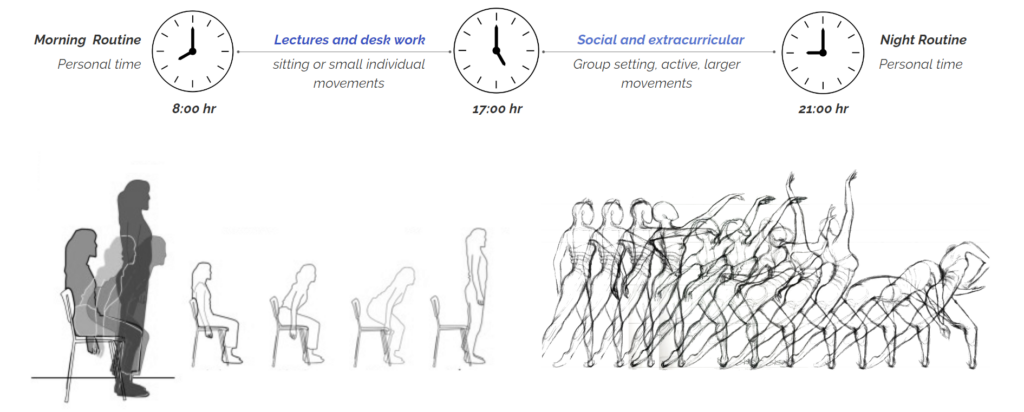
Now put yourself in a large empty space – How would you feel? Perhaps uncomfortable? How about with another person? Maybe Awkward? And what about with a group of people? More comfortable or vulnerable? And how about if this space is tight? How do we define intimacy? Should spatial boundaries be considered a standard for everyone?Now put yourself in a large empty space – How would you feel? Perhaps uncomfortable? How about with another person? Maybe Awkward? And what about with a group of people? More comfortable or vulnerable? And how about if this space is tight? How do we define intimacy?
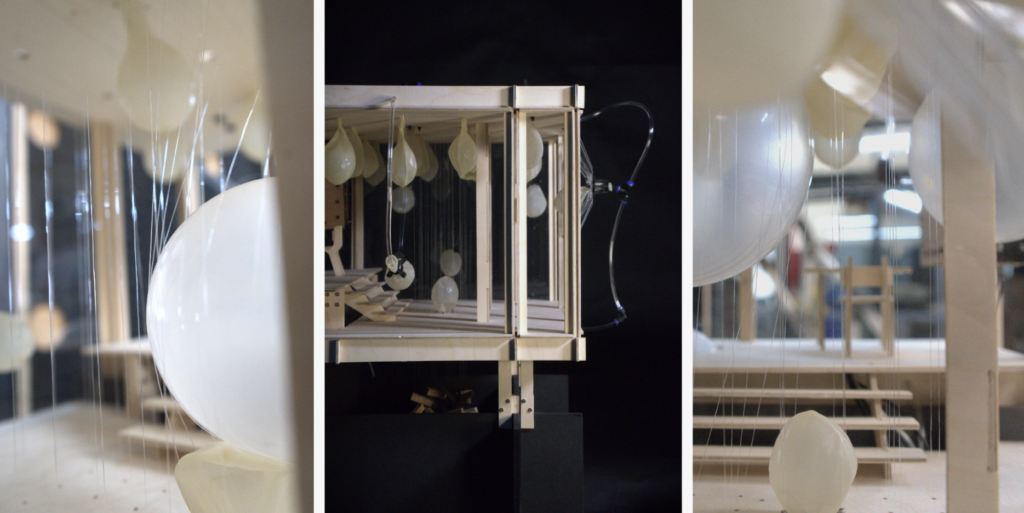
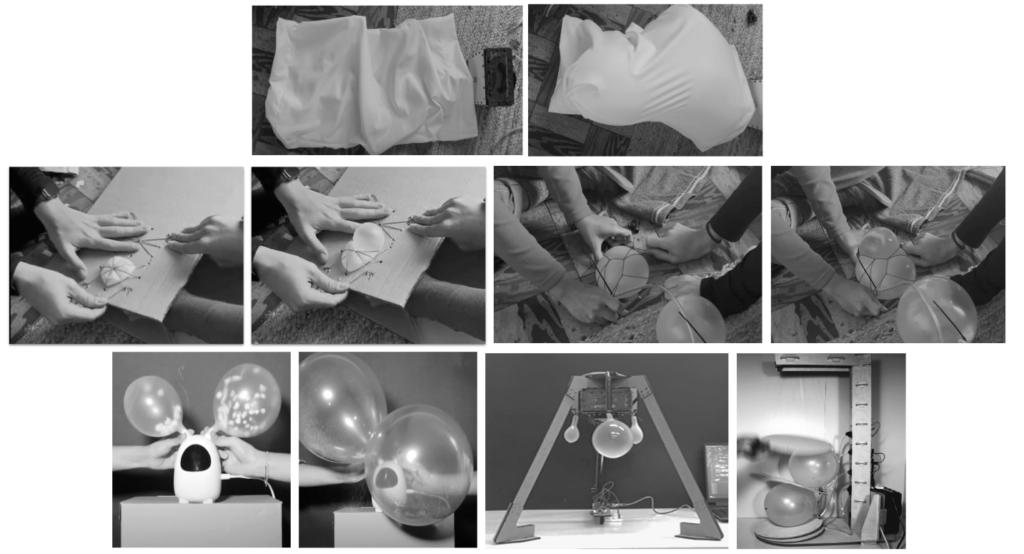
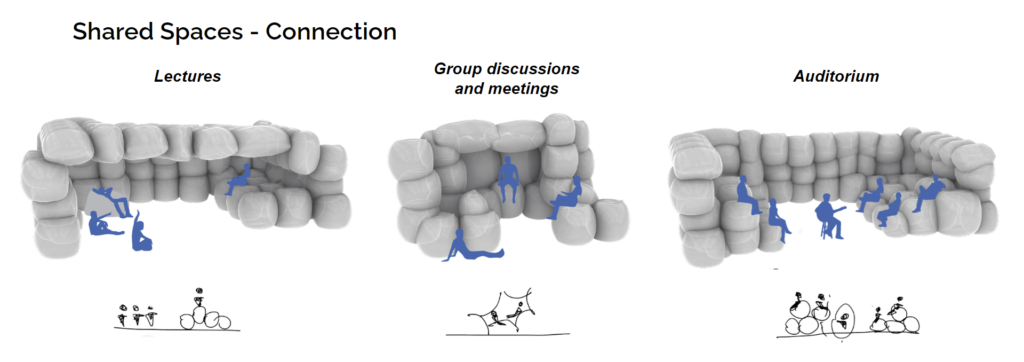
Shared spaces can allow for connection, interaction and vulnerability.
Connecting spaces means more than just only opening walls.
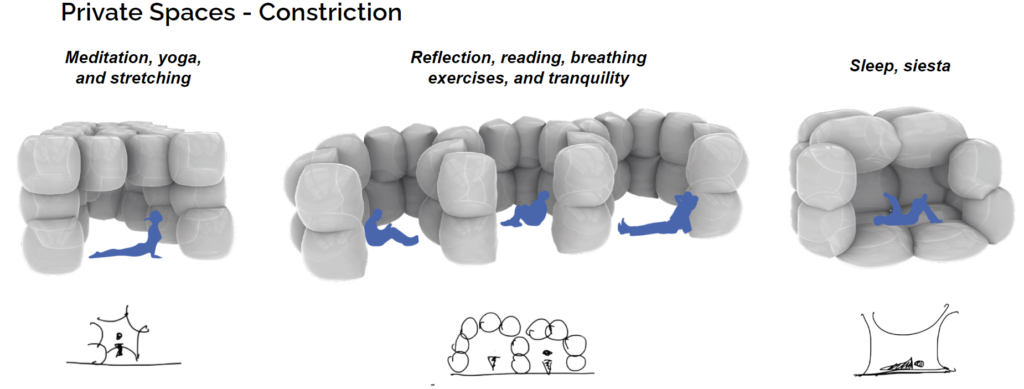
Within private spaces, we tend to feel relaxed and safe. Such spaces can allow for activities that require focus and slowing down.
Beyond personal preferences, spatial qualities are also impacted by external factors, such as climate. Because of that, ventilation strategies are being considered to maintain comfortable temperatures throughout seasons. By studying the site according to climatic factors such as solar analysis, we are creating shading strategies for passive heating and cooling depending on position of elements. Our goal is to design both indoor and outdoor areas to be comfortable throughout seasons. And for that we are exploring different geometry iterations using computational tools to optimize the amount of direct sun hours.
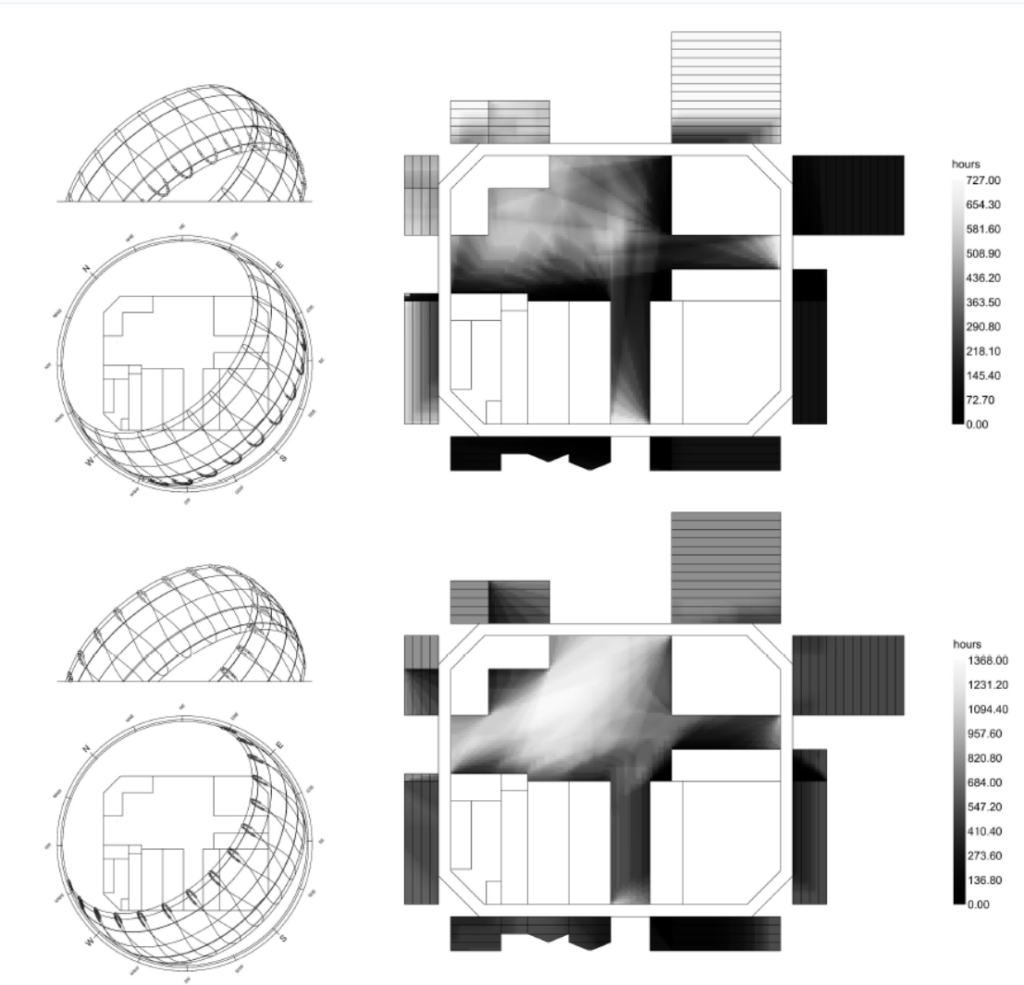
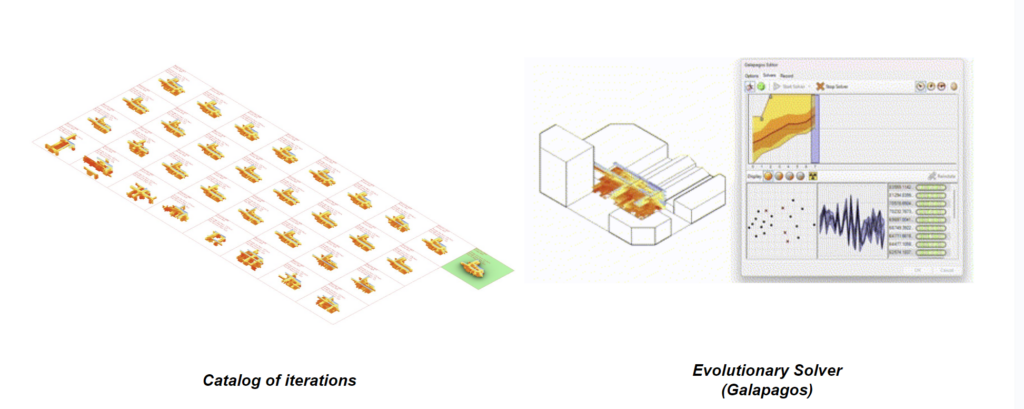
Types of Inflatables Membranes
Based on this analysis, the design allocates buffer zones using ETFE and silicone membranes to naturally heat the building in the winter by trapping solar energy, and cool during the summer using building’s existing HVAC system and solar chimneys.
These three membranes alter the way this building responds to user needs. Internal silicone membranes for form and acoustic properties, layers of silicone with ETFE external membranes for lighting control and ETFE in the buffer zone to trap heat/cold.
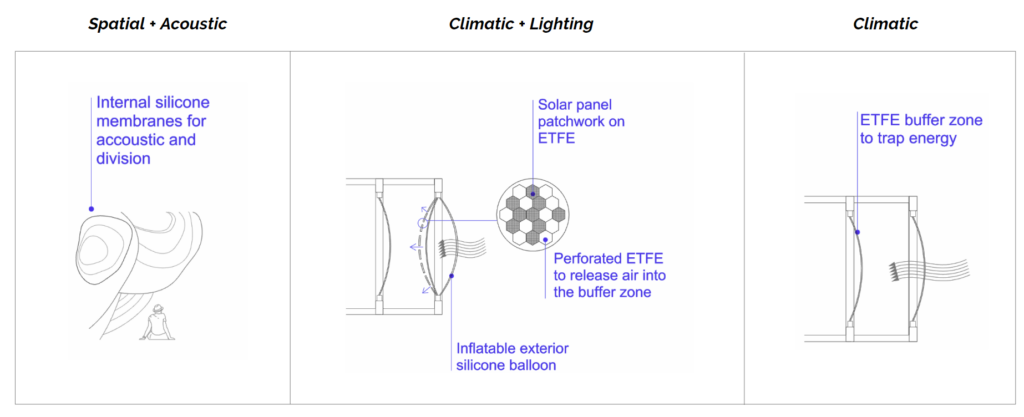

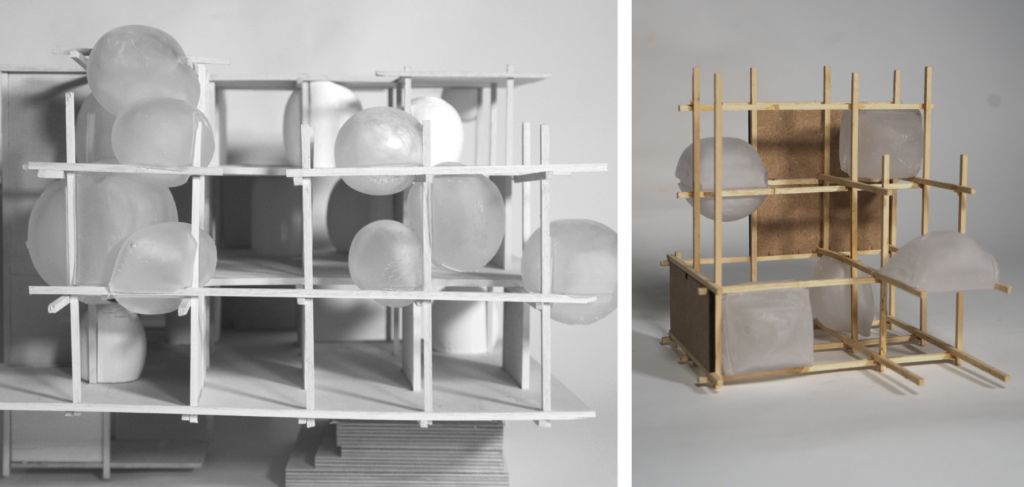
Coming to the site, our building sits in the zone that receives the highest amount of sunlight hours throughout the year.

Our building has 2 access points, one from IAAC, and one from the street level.
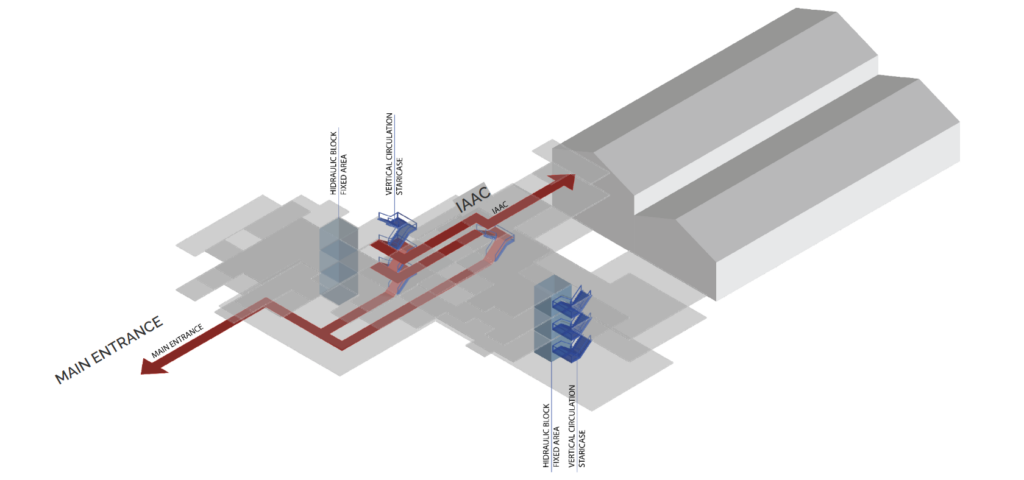
Activity flow across different levels: day & night

Depending on the needs during certain time frames, the movement of people alter the architecture. Considering these types of configurations, we are exploring the topology of our inflatable grid.
Stage 01 – Working
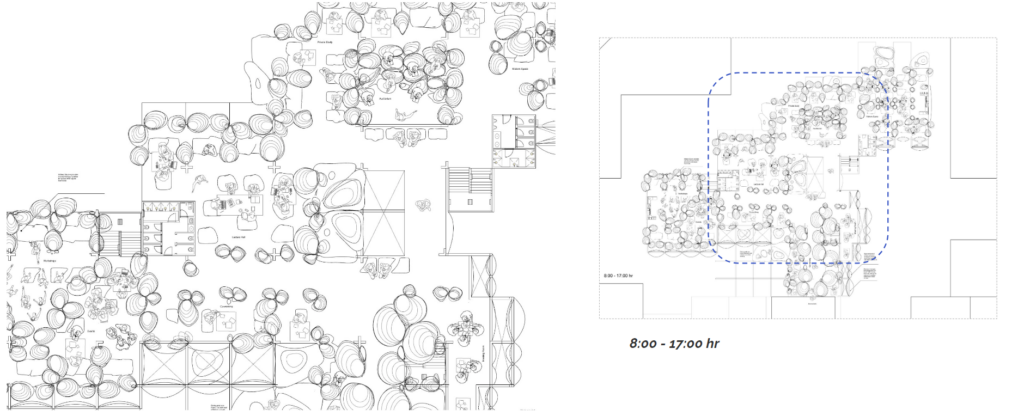
During day hours, the building transforms communal spaces into auditoriums and lecture halls, and bedrooms into semi-public study spaces. The buffer zones during the day traps heat by inflating, and provides filtered lighting for these functions
Stage 2 – Leisure
In the evening, the co-working zones become spaces for hobbies and leisure, and study rooms transform into bedrooms. The buffer zones deflate, providing heating or cooling

Inflation and deflation are set up for the open space to shift and transform into multiple types of setups depending on input from both the climate and the user, not only in the sense of enclosing and opening spaces but also to bring new possible ways of bringing connectivity and distribution
During the solar cycles, the inflation of canopies create shelter from the sun for outdoor courtyards, rooftops and balconies. And spaces connect in double height to accommodate certain activities
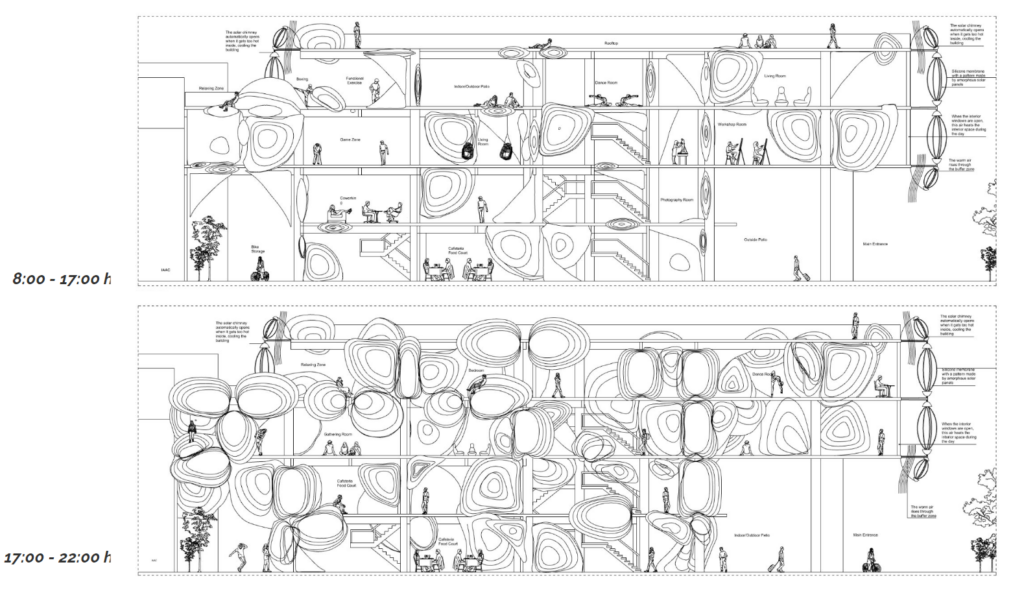
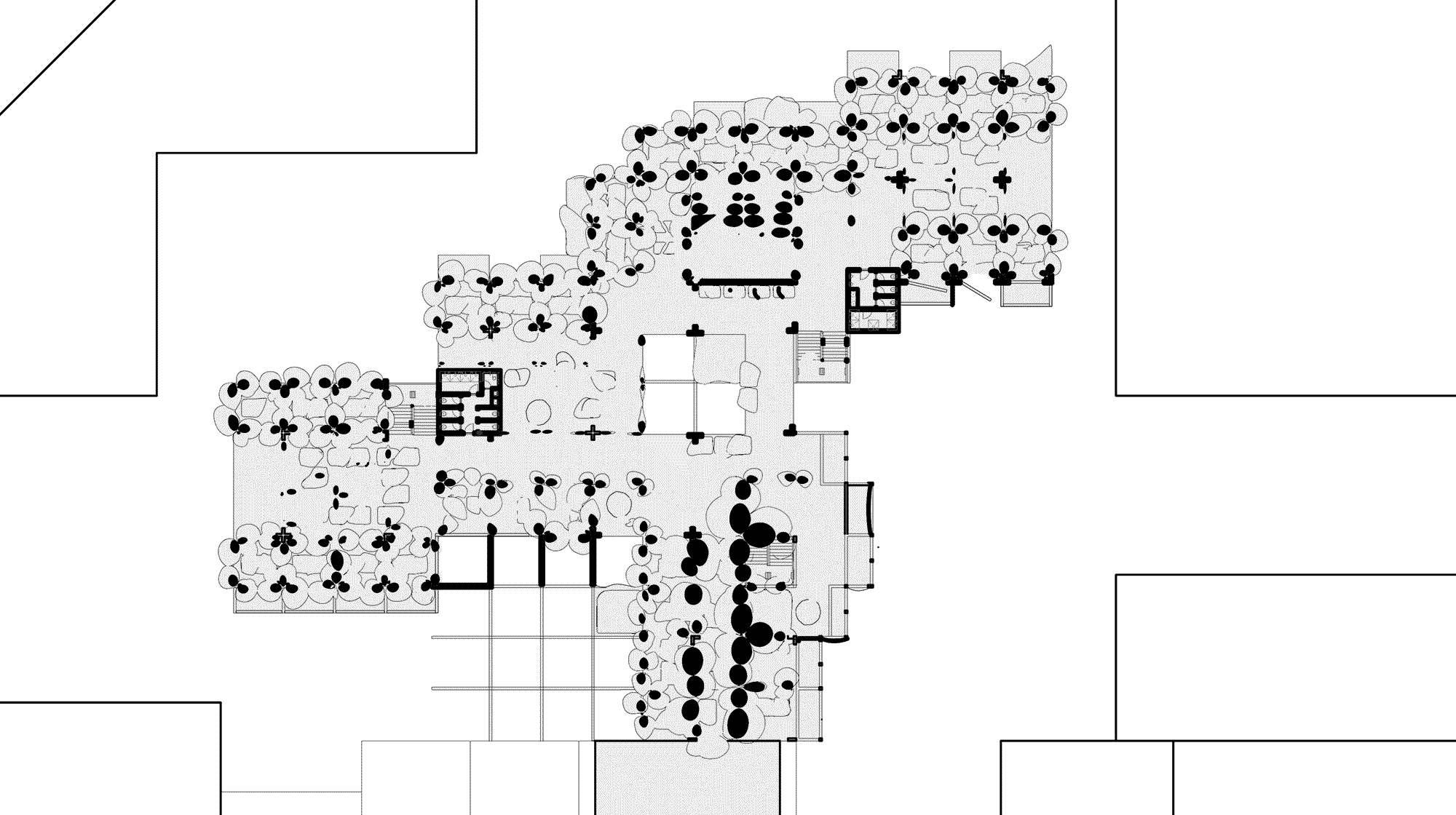

We are conceiving the entire system to be an interconnected grid of inflatable prefabricated units. Each unit would be fabricated with standardized steel profiles that would be weld and clamped onto a folded sheet on silicone rubber. Then the units are meant to be placed and anchored individually to the building structure.
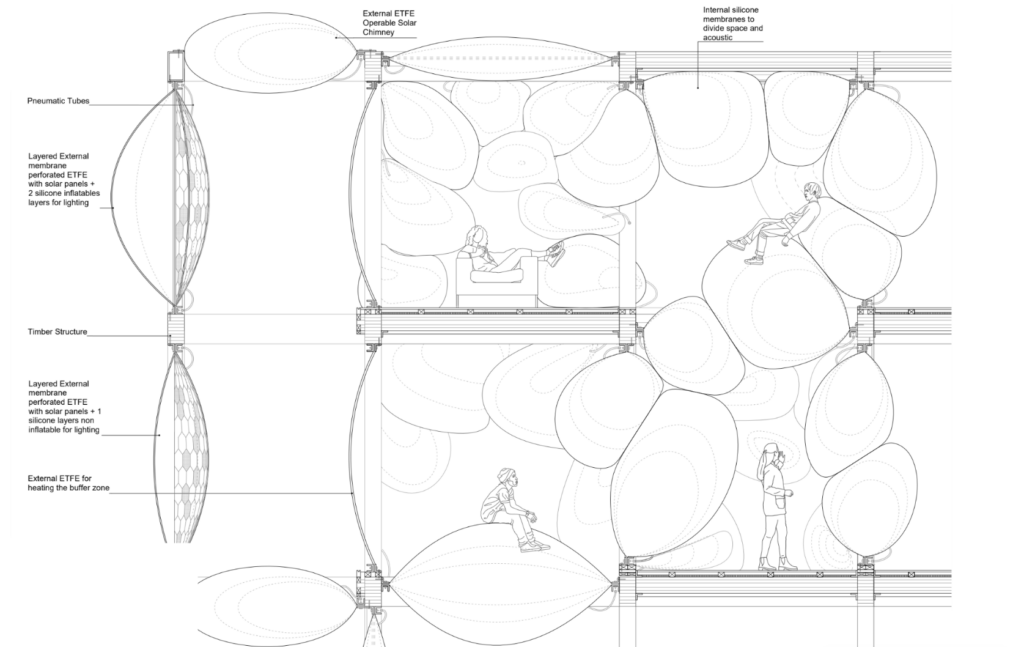
Fabrication Process

So, in conclusion, why the cloud?
Just how a cloud transforms based on seasons and climatic conditions, building
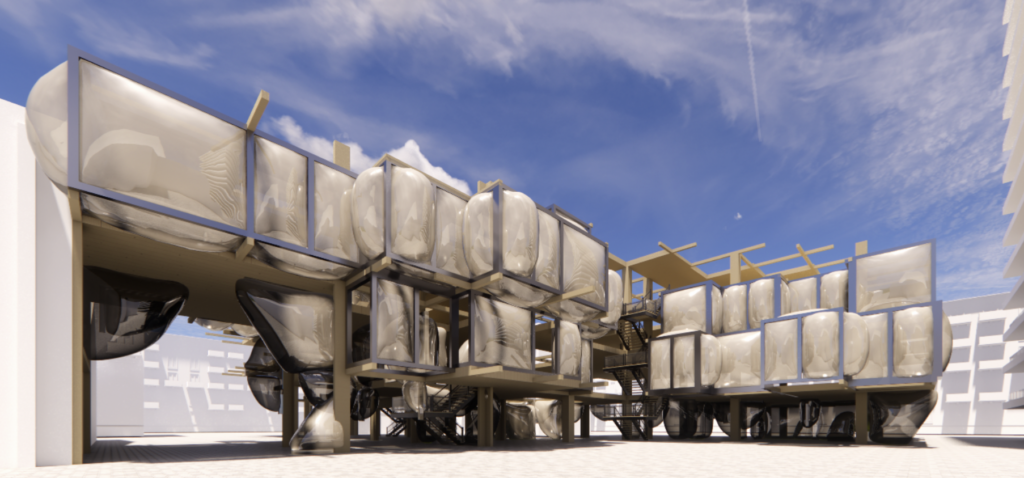
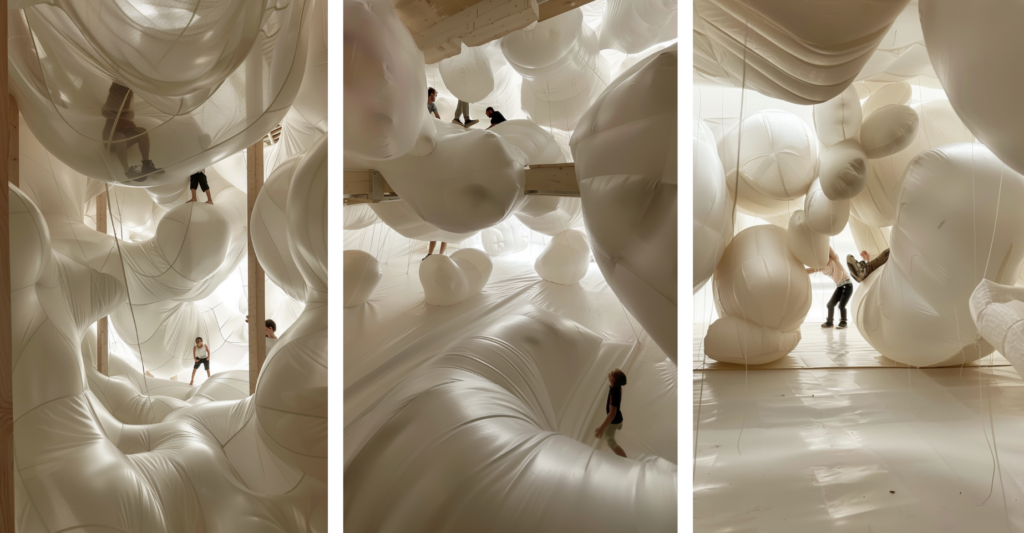

Thank You!

